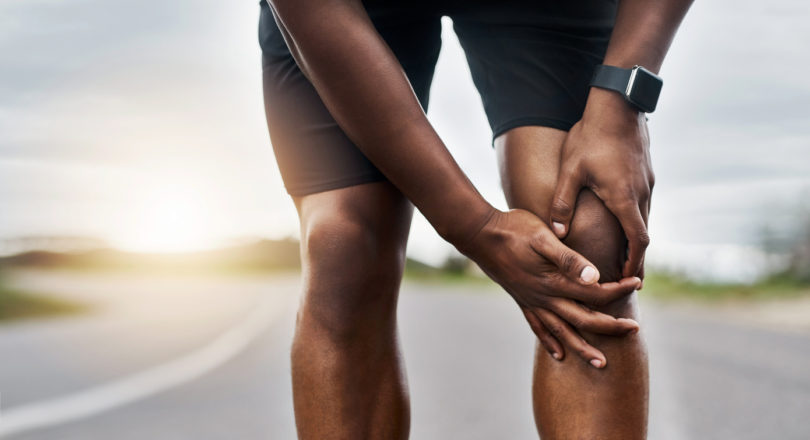Do your knees hurt during or after physical activity? If you’re experiencing knee pain the first step is to see a professional, but what do you do when you’ve visited the doctor, had the imaging done, everything looks on the up and up but you’re STILL in pain?
The Kinetic Chain
Any movement you create at one joint affects movement of all the surrounding tissues. This concept is what we mean when we talk about the Kinetic Chain. Here’s a simple experiment to test that concept: Point one arm straight out in front of you so that it’s parallel to the ground and your palm faces the floor. Have a friend place their hand on the shoulder blade of that same side of the body. Now turn your palm and forearm toward the ceiling and your friend will feel your shoulder blade drop down and back toward your spine.
If turning your wrist creates that much movement in your back, how much more complex is the relationship between hip/knee/ankle during something like a lunge? So when we’re talking about knee pain with no obvious cause, it generally comes down to dysfunction in the surrounding joints — that is, weakness and/or instability at the hip and ankle.
From the Ground Up
When tackling knee pain, it helps to work from the ground up. Why? Because we will have a heck of a time getting our glutes to cooperate if there are unaddressed issues in the foot. Believe it or not, your glutes are some of the biggest, most powerful muscles in your body. They are used for, among other things, explosive movements like running sprints and jumping. Think of your glutes as your propulsion muscles. If your nervous system sees problems where your body contacts the ground (your foot), it has a tendency to “shut off” your glute muscles in an effort to prevent you from hurting yourself.
A steady diet of ankle strengthening, stability and mobility exercises should get you on the right track.
Onward and Upward
Now that our ankles have gotten some love we can move to the hips. Ankle issues can absolutely create problems in our ability to use our hips effectively, but many people have weak, underactive glutes from, well … sitting on them all day. Your bum plays a huge role in supporting and moving your weight, and anytime your glutes aren’t carrying their weight your angry knees get to pick up the slack. When working to strengthen your glutes, every rep of every exercise should be done with intention — squeeze those suckers like you mean it! A silly cue that seems to work well is to act like you’re squeezing a cherry between your cheeks. Remind your body how to use those muscles! Feel them work. Think of this process as “gluteal rediscovery.”
If you have one knee that is particularly troublesome, you will probably find that the accompanying glute is much weaker than the other. Some single leg exercise will help prevent one side from taking over. Single leg work also serves to help build ankle and hip stability all at the same time. Supplement with other exercises to create strength and healthy movement in all muscles of the hip and see if this improves your knee discomfort over time.
Seek Help if Needed
If you have a problem you’re not confident tackling then you should seek the guidance of a coach. Use this information to jump start your own research or to get you asking the right questions in your search for a professional that can help you.

